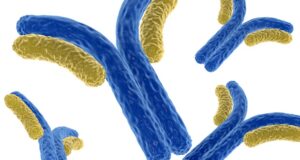
A study published in Psychiatry Research identifies subtle differences in facial shapes that may be linked to the diagnosis of schizophrenia and bipolar disorder. According to the findings, these facial patterns would also be associated with some measures of the cerebral cortex. The study, which applies advanced geometric morphometric and neuroimaging techniques, serves the dual purpose of better understanding the origin of these psychiatric disorders and advancing the field of personalized medicine.
The study is led by teams from the Faculty of Biology of the University of Barcelona, the FIDMAG Hermanas Hospitalarias Research Foundation, the Networking Biomedical Research Centre in Mental Health (CIBERSAM) and La Salle Ramon Llull University. The Benito Menni CASM and Mare de Déu de la Mercè (Hermanas Hospitalarias) hospitals have also participated.
Combining different markers to improve diagnosis
Schizophrenia and bipolar disorder are serious psychiatric disorders that affect about 65 million people worldwide. The presence of a heterogeneous combination of symptoms, together with a high diversity in the course of and response to treatment, makes understanding their causes and accurate diagnosis difficult.
Environmental and genetic factors influence the process of brain development and maturation. In some cases, subtle changes in this development may contribute to an increased risk of psychiatric disorders. In this context, the study builds on the shared embryonic development of the face and brain, and identifies face shape as an indirect marker of brain changes related to these diagnoses, while highlighting that there may be sex-specific patterns.
In the case of schizophrenia, the study showed significant facial differences between controls and patients, as well as gender-specific differences. Moreover, for women, the diagnosis of schizophrenia accounted for a higher percentage of facial shape variation (5.9%) compared to men (4.2%). In contrast, in bipolar disorder, significant facial differences were only found in male patients.
The first author of the study, Noemí Hostalet (UB, FIDMAG, CIBERSAM) explains that “the facial features associated with schizophrenia and bipolar disorder are very subtle and undetectable to the naked eye”. Researchers Neus Martínez-Abadías (UB) and Mar Fatjó-Vilas (UB, FIDMAG, CIBERSAM) say that “facial features alone would therefore not be useful for diagnosing these disorders. The same applies to other morphological features of the brain and genetic characteristics. No single biomarker has sufficient diagnostic potential”.
The team notes that “the hypothesis is that, by combining the potential of facial, brain and genetic biomarkers, we could develop a complementary tool to the clinical interview that could help clinicians make diagnoses more quickly and accurately. Therefore, this study could represent a potential complementary tool to the current ones to make earlier and more accurate diagnoses, provided that the necessary ethical and privacy aspects are rigorously guaranteed”.
To deploy this biomedical tool, we will need further research and the development of very strict data protection methods to ensure its use in the strictly medical field, guaranteeing that it meets all ethical and privacy requirements. In this type of research, it is essential to avoid misuse of highly sensitive data, which could lead to discrimination against people diagnosed with mental disorders.
For now, the team is working to expand and replicate the analyses in a larger population sample. Also, new approaches to integrate different facial and brain markers with genomic data are also being addressed. By combining biological, biometric and clinical markers, the team aims to contribute to a better understanding of the origin of mental disorders and to develop tools to help diagnose them.
Source:
Journal reference:
Hostalet, N., et al. (2024). Face-brain correlates as potential sex-specific biomarkers for schizophrenia and bipolar disorder. Psychiatry Research. doi.org/10.1016/j.psychres.2024.116027.




